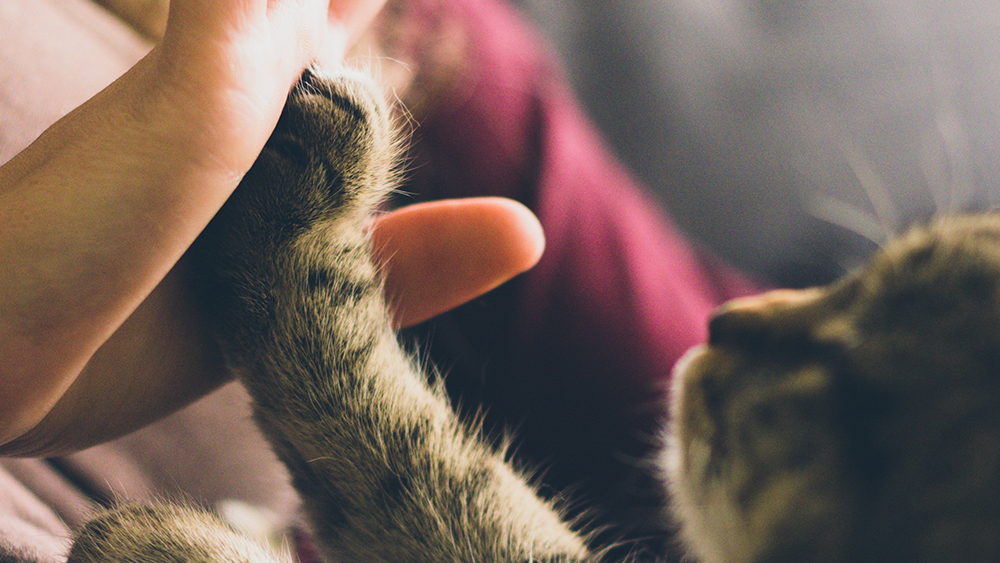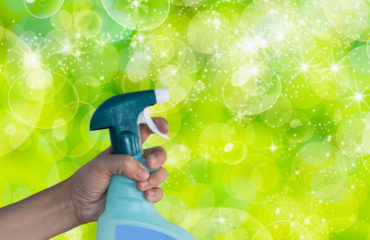Depending on what you use to clean your house, you could be forcing your dog to live in a toxic environment. According to US Environmental Protection Agency (EPA) studies, the level of air pollution inside maybe two to five times, and sometimes more than 100 times, higher than outdoor air pollution. That means if your dog spends most of her time inside, she’s breathing in toxic fumes all day long.
Think about it: you clean the house using a variety of sprays, washes and cleansers. Your dog sleeps on the floor, licks the floor and herself, and she can absorb toxins through her skin too That means she’s taking in these harmful chemicals much more than you are.
And don’t forget that your dog’s sense of smell is up to 10,000 times more sensitive than your own. If your hardwood floor cleaner smells strong to you, how do you think your dog feels (and she’s much closer to it!).
So what toxic ingredients do you need to avoid?
Ammonia
Almost 90% of the cleaning agents available in the market has ammonia which is highly toxic.
It’s a known irritant, particularly to your dog’s respiratory system. It can cause burning in the throat, nose and respiratory tract, which can lead to breathing issues. It can also irritate the skin and eyes. If your dog licks it, it can lead to burning inside his mouth, throat and stomach.
Ammonia is commonly found in:
- Oven cleaners
- Window cleaners
- Stainless steel cleaners
- Wax for hardwood floor
Bleach (chlorine)
Chlorine, with the household name ‘bleach’ is a strong disinfectant and many people use it directly or indirectly when using products containg bleach
Depending on how much bleach your dog swallows, vomiting, diarrhea, burns inside the mouth or throat, even seizures and shock can be the result. If she inhales the fumes, this can lead to respiratory illness.
Bleach is commonly found in:
- Scouring powders
- Toilet bowl cleaners
- Mildew removers
- Basic bleach
- Laundry detergent
- Dishwashing detergent
- All purpose cleansers
Phthalates
According to the National Toxicology Program, phthalates are “reasonably anticipated to be a human carcinogen based on sufficient evidence of carcinogenicity from studies in experimental animals.” In other words, evidence suggests they cause cancer.
These are endocrine disrupting chemicals used to make products smell good. And just because they’re not on the ingredient list, doesn’t mean they’re not in that bottle. “Fragrance” can mean phthalates (and usually does).
Animal studies have found that phthalates can cause liver, testicular and pancreatic tumors.
Phthalates are commonly found in:
- Deodorizers
- All-purpose cleaners
And by the way, phthalates are also in other dog products like toys, crate mats, beds and more so check out what’s in these products before you buy them.
Glycol Ethers
Glycol ethers are another toxic chemical found in many household products, especially cleaners
EPA studies show that glycol ethers can cause liver, nerve and digestive damage. They’ve also been linked to lung damage, anemia and kidney damage in both animals and humans.
Glycol ethers are commonly found in:
- All purpose cleaners
- Spot removers
- Carpet cleaners
- Glass cleaners
- Liquid soaps
Also watch out for it in so-called “natural” cleansers.
Formaldehyde
Probably best known as an embalming agent, formaldehyde is also found in household cleaning products. When it reaches room temperature it’s released into the air, inhaled by your dog and absorbed into her skin.
It’s a severe eye and skin irritant, can decrease respiratory rate and decrease nerve response rate.
It’s recognized by the EPA as a carcinogen.
Formaldehyde is commonly found in:
- General household cleaners
- Plug-in fragrances
- Paper towels
- Hand soap
- Pet shampoo
Many things like new carpets and upholstered furniture are often treated with formaldehyde too, so find out about these before you buy!
1,4-Dioxane
Dioxane, which is classified as Ether, is a byproduct of the manufacturing process, used mainly with chemicals, plastics, pesticides, and cosmetics.
Studies show that breathing it in, swallowing it, or having skin contact with it primarily affects the kidneys and liver, causing irritation. These studies also show that 1,4-Dioxane can cause cancer.
And, because it’s a byproduct, it’s usually not listed on label, so look for an organic, natural alternative and do your homework. At the very least, don’t use them for your dog laundry (beds, towels, etc).
1,4-Dioxane is commonly found in:
- Laundry detergent
- Dryer sheets
- Cosmetics
- Paint and varnishes
So, next time when you buy a floor cleaner or disinfectant, buy a pet safe one like Effy



